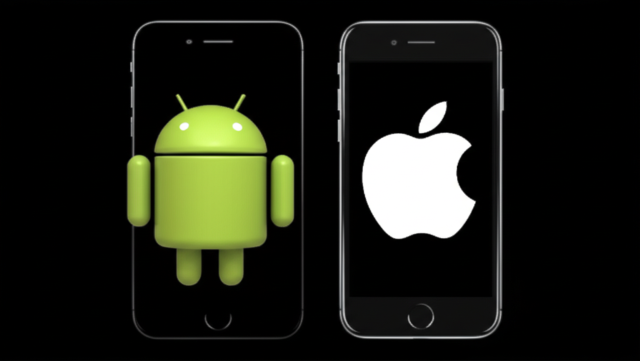
Ghosts: Real or Not?
The question of whether ghosts are real has haunted humanity for centuries. From chilling whispers in ancient ruins to modern-day paranormal investigations, the belief in spirits persists, fueling countless stories, legends, and debates. But can we separate fact from fiction, science from superstition? Let's delve into the evidence, the arguments, and the enduring mystery surrounding the possibility of ghosts.
The Evidence (or Lack Thereof):
The primary challenge in investigating ghosts lies in the lack of concrete, repeatable scientific evidence. While countless people claim to have experienced paranormal phenomena – seeing apparitions, hearing unexplained noises, feeling cold spots – these accounts are often anecdotal. They lack the rigorous testing and verification necessary for scientific acceptance. Many seemingly supernatural events can be explained by natural causes:
- Misinterpretations of sensory information: Our brains are remarkably good at filling in gaps and making assumptions, sometimes leading to misinterpretations of sounds, shadows, and temperature changes.
- Environmental factors: Sounds, drafts, and temperature fluctuations in old buildings can easily create the illusion of supernatural activity. Creaking floorboards, rustling leaves, and settling foundations can be easily mistaken for ghostly footsteps or whispers.
- Pareidolia: This is our tendency to see patterns and faces in random stimuli, such as seeing faces in clouds or hearing messages in static. This can contribute to interpretations of random visual or auditory phenomena as ghostly manifestations.
- Suggestibility and psychological factors: Our expectations and beliefs can strongly influence our perceptions. If we enter a supposedly haunted location expecting to see a ghost, we might be more likely to interpret ambiguous sensory information as evidence of paranormal activity.
- Mass hysteria: In some cases, reports of paranormal activity can spread through a group, creating a self-reinforcing belief system, even in the absence of actual events.
Despite the lack of conclusive scientific proof, many proponents of the paranormal point to other forms of evidence:
- Electromagnetic Field (EMF) readings: Some paranormal investigators use EMF meters to detect unusual spikes in electromagnetic fields, which are sometimes associated with ghostly activity. However, EMF fluctuations have many mundane explanations, and there's no established link between EMF changes and the presence of spirits.
- EVP (Electronic Voice Phenomena): These are supposed voices captured on recording devices that are claimed to be spirits communicating. However, these recordings are often difficult to interpret, and the sounds can be explained by background noise, equipment malfunction, or even subconscious suggestions from the investigators themselves.
- Photographs and Videos: While some images and videos show apparent anomalies, these can often be attributed to camera malfunctions, photographic effects, or deliberate manipulation.
- Historical accounts and folklore: Many cultures have rich traditions of ghost stories and folklore. While these narratives can be fascinating and revealing about cultural beliefs, they are not verifiable scientific evidence.
The Arguments for Ghosts:
While scientific evidence is scant, belief in ghosts persists. Arguments for their existence often center on personal experiences and interpretations of unexplained events. Many people report deeply personal and emotionally impactful encounters that they find impossible to explain away by mundane explanations. These experiences, while not scientifically provable, hold significant weight for the individuals who have them. Furthermore, some argue that the limitations of current science prevent us from detecting or understanding the nature of spirits. The very nature of a "ghost" – a disembodied consciousness or energy – might be beyond the capabilities of our current scientific instruments and methodologies.
The Arguments Against Ghosts:
The scientific community, by and large, remains skeptical. The lack of reproducible evidence, the prevalence of alternative explanations, and the inherent difficulty in defining and testing the concept of a "ghost" create significant hurdles to acceptance. Critics argue that anecdotal evidence is unreliable and prone to bias, misinterpretation, and outright fabrication. The fact that many purported ghost sightings have been debunked or explained away by natural phenomena further strengthens the arguments against their existence.
The Ongoing Debate:
The debate surrounding the existence of ghosts is likely to continue for years to come. The lack of conclusive scientific evidence does not necessarily disprove the possibility of their existence, but it does mean that any claims of ghostly phenomena must be treated with a healthy dose of skepticism. The question of ghosts touches upon fundamental questions about consciousness, the nature of reality, and the limits of scientific understanding. It is a debate that blends science, psychology, and the enduring human fascination with the unknown.
Conclusion:
Ultimately, whether or not you believe in ghosts is a matter of personal conviction. There is currently no conclusive scientific evidence to prove or disprove their existence. While countless stories and personal accounts exist, they lack the rigorous testing and verification necessary for scientific acceptance. However, the enduring fascination with ghosts reflects our deep-seated curiosity about life, death, and the mysteries that lie beyond our current understanding. Whether you see them as figments of imagination or manifestations of a reality beyond our grasp, the question of ghosts will likely continue to intrigue and inspire for generations to come. The exploration of this question pushes the boundaries of scientific inquiry and challenges us to consider the limits of what we know, and perhaps, what we can ever know.

